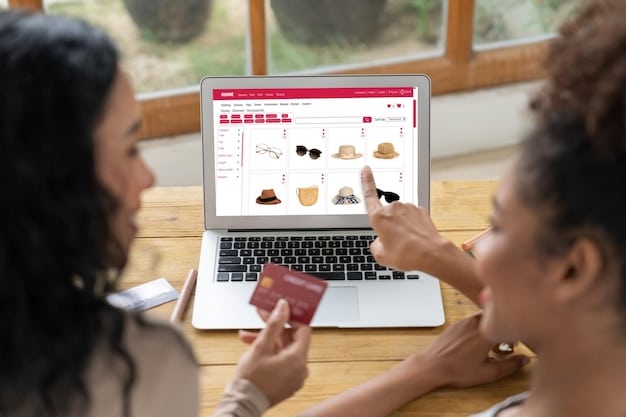Personalized Onboarding: Boost Customer Relationships for the Long Term

Personalized onboarding is a crucial strategy for building strong, lasting customer relationships by tailoring the initial experience to meet individual needs and expectations, driving higher engagement and loyalty.
In today’s competitive market, customer retention is as important as acquisition. Personalized onboarding: A critical step in building long-term customer relationships, is no longer a luxury—it’s a necessity for businesses aiming to foster lasting loyalty.
Understanding the Core of Personalized Onboarding
Personalized onboarding goes beyond generic tutorials and welcomes. It’s about crafting an experience that speaks directly to each customer’s needs, goals, and preferences. This tailored approach can significantly impact customer satisfaction and long-term retention.
By focusing on the individual, businesses can build stronger relationships that encourage loyalty and advocacy. Here’s how to dive deeper into what personalized onboarding entails.
Why Generic Onboarding Falls Short
Traditional, one-size-fits-all onboarding can be ineffective because it fails to address the unique needs of each customer. This can lead to frustration, disengagement, and ultimately, churn.
Generic onboarding often overwhelms new users with irrelevant information, making it difficult for them to quickly grasp the value of the product or service.
- ❌ Missed opportunities to highlight key features relevant to individual users.
- ❌ Increased frustration due to irrelevant information.
- ❌ Lower engagement rates and higher churn.
- ❌ Failure to build a strong initial connection with the customer.
Personalized onboarding addresses these shortcomings by providing a customized experience that resonates with each user’s specific circumstances.

In summary, personalized onboarding is about making each customer feel valued and understood from the start, resulting in a more positive and enduring relationship.
The Benefits of a Tailored Customer Journey
Implementing a personalized onboarding process yields numerous benefits, from increased customer retention to improved brand advocacy. By catering to individual needs, companies can create a customer experience that stands out.
A tailored customer journey not only enhances satisfaction but also fosters a sense of loyalty and connection with the brand. Let’s explore the advantages in more detail.
Increased Customer Retention
Personalized onboarding plays a crucial role in retaining customers by making them feel valued and understood. When users receive targeted support and relevant information, they are more likely to stick around.
This approach ensures that customers quickly see the value of the product or service, reducing the likelihood of churn.
- ✅ Higher satisfaction rates due to personalized support.
- ✅ Reduced churn as customers quickly grasp the product’s value.
- ✅ Stronger customer loyalty and long-term engagement.
- ✅ Improved customer lifetime value (CLTV).
By investing in personalized onboarding, businesses can create a solid foundation for lasting customer relationships and sustained growth.
In conclusion, a personalized customer journey translates to happier, more loyal customers who are invested in your brand.
Strategies for Effective Personalized Onboarding
Creating a personalized onboarding experience requires a strategic approach that takes into account customer data, feedback, and technological tools. The goal is to deliver a seamless and relevant experience from the outset.
Effective strategies focus on understanding customer needs and tailoring the onboarding process accordingly. Here are some key tactics for success.
Leveraging Customer Data
Customer data is the cornerstone of personalized onboarding. By analyzing information such as demographics, purchase history, and behavior patterns, businesses can create targeted onboarding experiences.
This data-driven approach ensures that each customer receives relevant content and support, increasing the likelihood of engagement and satisfaction.
- 📊 Use CRM data to understand customer preferences.
- 📊 Analyze past purchases to recommend relevant features.
- 📊 Track user behavior to identify pain points.
- 📊 Segment customers based on their needs and goals.
In essence, leveraging customer data enables businesses to deliver onboarding experiences that resonate with individual users, fostering stronger relationships.

In summary, effective personalized onboarding relies on a deep understanding of customer data to create relevant and engaging experiences that drive long-term loyalty.
Technology’s Role in Personalization
Technology plays a pivotal role in scaling personalized onboarding efforts. Tools like AI-powered chatbots, automated email sequences, and advanced analytics platforms enable businesses to deliver customized experiences at scale.
These technologies not only streamline the onboarding process but also provide valuable insights into customer behavior, allowing for continuous improvement.
AI and Chatbots
AI-powered chatbots can provide instant support and personalized guidance to new users, answering questions and resolving issues in real-time.
By analyzing user queries, chatbots can also identify common pain points and suggest improvements to the onboarding process.
- 🤖 Provide 24/7 support and instant answers.
- 🤖 Offer personalized recommendations based on user queries.
- 🤖 Collect feedback and identify areas for improvement.
- 🤖 Guide users through complex processes.
In short, AI and chatbots enhance the efficiency and effectiveness of personalized onboarding by providing immediate and tailored support to new users.
Overall, technology simplifies the delivery of personalized experiences, making it easier for businesses to connect with customers on an individual level and build lasting relationships.
Measuring the Success of Personalized Onboarding
Measuring the effectiveness of personalized onboarding is essential for optimizing the process and ensuring it delivers the desired results. Key metrics include customer retention rates, satisfaction scores, and engagement levels.
By tracking these metrics, businesses can identify areas for improvement and fine-tune their onboarding strategies to maximize impact.
Key Performance Indicators (KPIs)
Several key performance indicators (KPIs) can help businesses assess the success of their personalized onboarding efforts. These KPIs provide valuable insights into customer behavior and satisfaction.
Monitoring these metrics enables companies to make data-driven decisions and continuously improve their onboarding process.
- 📊 Customer Retention Rate: Percentage of customers who continue using the product or service over time.
- 📊 Customer Satisfaction Score (CSAT): Measure of customer satisfaction with the onboarding experience.
- 📊 Net Promoter Score (NPS): Metric that measures customer loyalty and willingness to recommend the product or service.
- 📊 Time to Value (TTV): Duration it takes for customers to realize the value of the product or service.
In conclusion, tracking KPIs provides valuable insights into the effectiveness of personalized onboarding, enabling businesses to optimize their strategies and drive long-term customer success.
In summary, measuring success ensures that personalized onboarding efforts are aligned with business objectives, leading to better customer outcomes and increased ROI.
Common Pitfalls to Avoid
While personalized onboarding offers numerous benefits, it’s important to avoid common pitfalls that can undermine its effectiveness. These include over-personalization, neglecting mobile users, and failing to gather feedback.
By anticipating and addressing these challenges, businesses can ensure their personalized onboarding efforts deliver the desired results.
Over-Personalization
Over-personalization can create a creepy or intrusive experience for customers, leading to discomfort and disengagement. It’s important to strike a balance between personalization and privacy.
Avoid using overly personal information or making assumptions about customer needs without sufficient data.
- ⛔ Using overly personal information that makes customers uncomfortable.
- ⛔ Making assumptions about customer needs without sufficient data.
- ⛔ Failing to provide clear options for opting out of personalization.
- ⛔ Neglecting data privacy and security.
In short, respect customer privacy and avoid over-personalization to create a welcoming and trustworthy onboarding experience.
In conclusion, avoiding these pitfalls ensures that personalized onboarding remains a positive and valuable experience for customers, fostering long-term loyalty and advocacy.
| Key Element | Brief Description |
|---|---|
| 🤝 Individualization | Tailoring onboarding to each customer’s unique requirements. |
| 📊 Data Utilization | Employing customer data for bespoke onboarding experiences. |
| 🤖 AI Chatbots | Providing instant and personalized support using AI. |
| 📈 KPI Tracking | Monitoring key metrics to gauge onboarding success. |
Frequently Asked Questions (FAQ)
▼
Personalized onboarding tailors the initial customer experience to their specific needs, preferences, and goals, ensuring a relevant and engaging start with a product or service.
▼
It improves customer retention and satisfaction by providing customized support and relevant information, helping customers quickly see the value and encouraging long-term engagement.
▼
Gather data from CRM systems, purchase history, user behavior tracking, and customer feedback surveys to understand preferences and segment users for targeted onboarding.
▼
AI-powered chatbots, automated email sequences, and advanced analytics platforms can streamline and customize onboarding, providing instant support and valuable insights into user behavior.
▼
Track key performance indicators (KPIs) such as customer retention rate, customer satisfaction score (CSAT), and time to value (TTV) to assess effectiveness and make data-driven improvements.
Conclusion
Personalized onboarding: A critical step in building long-term customer relationships, is essential for modern businesses. By tailoring onboarding experiences, businesses can boost customer satisfaction, encouraging lasting loyalty and growth.





